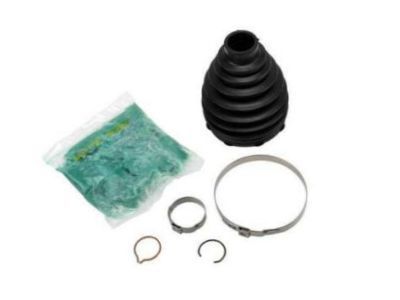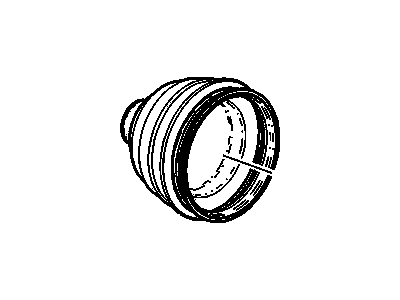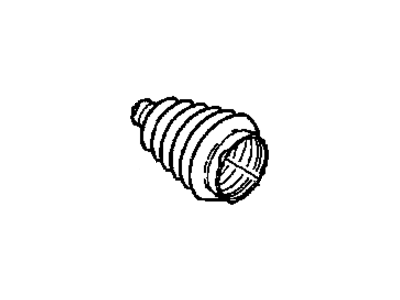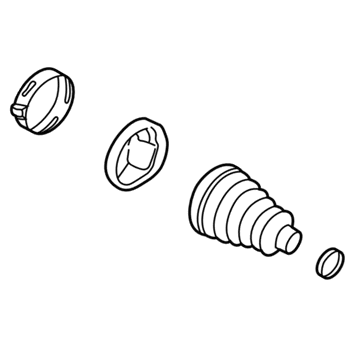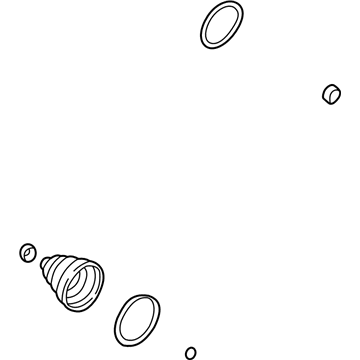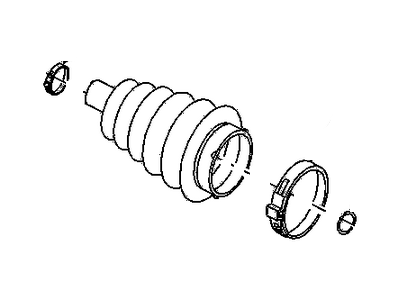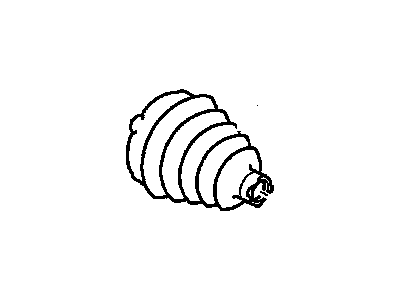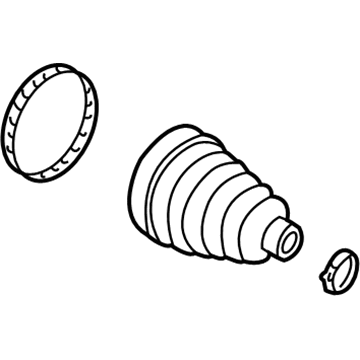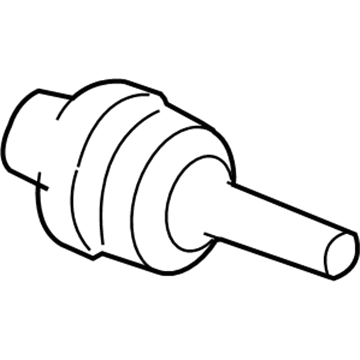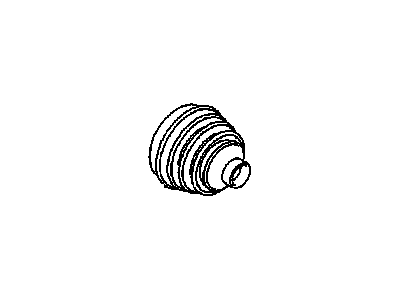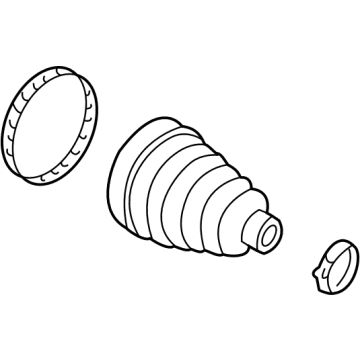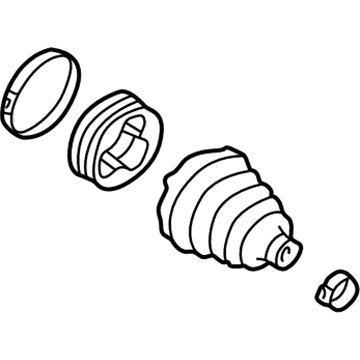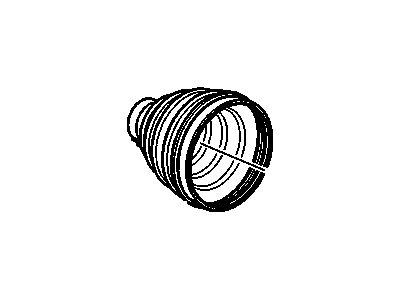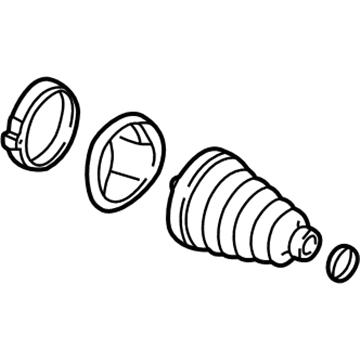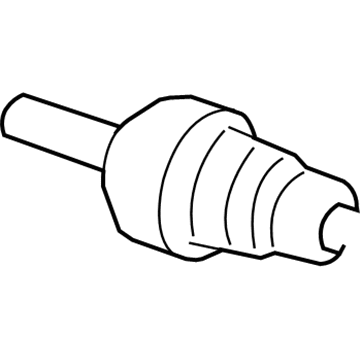
My Garage
My Account
Cart
Genuine Saturn CV Boot
Axle Boot- Select Vehicle by Model
- Select Vehicle by VIN
Select Vehicle by Model
orMake
Model
Year
Select Vehicle by VIN
For the most accurate results, select vehicle by your VIN (Vehicle Identification Number).
37 CV Boots found
Saturn Boot Kit,Front Wheel Drive Shaft Cv Joint
Part Number: 19210864$40.05 MSRP: $68.46You Save: $28.41 (42%)Ships in 1-2 Business DaysProduct Specifications- Other Name: BOOT KIT, Front Wheel Drive Axle Shaft
- Position: Front
- Replaces: 15918509, 19206498
Saturn Boot Kit,Front Wheel Drive Shaft Cv Joint
Part Number: 19178957$90.86 MSRP: $155.36You Save: $64.50 (42%)Ships in 1-2 Business DaysProduct Specifications- Other Name: BOOT KIT, Front Axle
- Position: Front
- Replaces: 19150654, 15855656
Saturn Boot Kit,Front Wheel Drive Shaft Tri, Pot Joint
Part Number: 15802955$26.32 MSRP: $53.05You Save: $26.73 (51%)Product Specifications- Other Name: BOOT KIT, Front Wheel Drive Axle Shaft; Inner Boot
- Position: Front
Saturn Boot Kit,Rear Wheel Drive Shaft(Inbord & Outboard)
Part Number: 88891074$49.86 MSRP: $122.21You Save: $72.35 (60%)Ships in 1-2 Business DaysProduct Specifications- Other Name: BOOT KIT, Rear Axle Universal Joint; Boot, Boot Kit
- Position: Rear
Saturn Boot Kit,Front Wheel Drive Shaft Tri, Pot Joint
Part Number: 19210863$118.23 MSRP: $195.68You Save: $77.45 (40%)Ships in 1-2 Business DaysProduct Specifications- Other Name: BOOT KIT, Front Wheel Drive Axle Shaft
- Position: Front
Saturn Boot Kit,Front Wheel Drive Shaft Cv Joint
Part Number: 22674175$39.57 MSRP: $65.50You Save: $25.93 (40%)Ships in 1-2 Business DaysProduct Specifications- Other Name: BOOT KIT, Front Wheel Drive Axle Shaft; Outer Boot
- Position: Front
Saturn Boot Kit,Front Wheel Drive Shaft Cv Joint
Part Number: 10359415$47.29 MSRP: $78.25You Save: $30.96 (40%)Ships in 1-2 Business DaysProduct Specifications- Other Name: BOOT KIT, Front Wheel Drive Axle Shaft; Boot, Outer Boot
- Position: Front
Saturn Boot Kit,Front Wheel Drive Shaft Tri, Pot Joint
Part Number: 15855655$20.14 MSRP: $32.12You Save: $11.98 (38%)Ships in 1-2 Business DaysProduct Specifications- Other Name: BOOT KIT, Front Axle; Inner Boot, Inner CV Joint Boot
- Position: Front
Saturn Boot Kit,Rear Wheel Drive Shaft Tri, Pot Joint
Part Number: 15855657$106.60 MSRP: $175.24You Save: $68.64 (40%)Ships in 1-2 Business DaysProduct Specifications- Other Name: BOOT KIT, Rear Axle Universal Joint; Boot, Inner Boot
- Position: Rear
Saturn Boot Kit, Front Wheel Drive Shaft Tri, Pot Joint
Part Number: 22692049$6.40 MSRP: $46.51You Save: $40.11 (87%)Ships in 1-2 Business DaysProduct Specifications- Other Name: BOOT KIT, Front Wheel Drive Axle Shaft; Inner Boot
- Position: Front
Saturn Boot Kit,Rear Wheel Drive Shaft Inner Cv Joint
Part Number: 19149073$9.33 MSRP: $54.63You Save: $45.30 (83%)Ships in 1-2 Business DaysProduct Specifications- Other Name: BOOT KIT, Rear Axle Universal Joint; Inner Boot
- Position: Rear Inner
- Product Specifications
- Other Name: BOOT KIT, Front Wheel Drive Axle Shaft; Inner Boot, Outer Boot
- Position: Front
- Product Specifications
- Other Name: BOOT KIT, Front Wheel Drive Axle Shaft; Inner Boot
- Position: Front
- Product Specifications
- Other Name: BOOT KIT, Front Wheel Drive Axle Shaft; Boot, Boot Kit, Inner Boot
- Position: Front
- Product Specifications
- Other Name: BOOT KIT, Front Wheel Drive Axle Shaft; Boot, Outer Boot
- Position: Outer
- Product Specifications
- Other Name: BOOT KIT, Rear Axle Universal Joint; Outer Boot
- Position: Rear
- Product Specifications
- Other Name: BOOT KIT, Front Wheel Drive Axle Shaft; Boot, Inner Boot
- Position: Inner
- Product Specifications
- Other Name: BOOT KIT, Rear Axle Universal Joint; Inner Boot
- Position: Rear
- Product Specifications
- Other Name: BOOT KIT, Front Wheel Drive Axle Shaft; Boot, Outer Boot
- Position: Outer
- Product Specifications
- Other Name: BOOT KIT, Rear Axle Universal Joint; Outer Boot
- Position: Rear Outer
| Page 1 of 2 |Next >
1-20 of 37 Results
Saturn CV Boot
In need of new Saturn CV Boots? We suggest you explore our vast collection of genuine Saturn CV Boots, all available at competitive prices. Furthermore, every OEM part we provide is backed by a manufacturer's warranty and comes with the promise of swift delivery and a hassle-free return policy.
Saturn CV Boot Parts Questions & Experts Answers
- Q: How can you check the CV Boot,steering and suspension components on Saturn Vue?A:To test the steering, set the brake, engage the gear and make sure the wheels are straight on the ground then turn the steering wheel from left to right a while; any play with them shows that some of the parts including the front wheel bearing or the steering gear may be worn. Abnormal signs such as oscillating on the seats, walking around the car or rubbing during turns could indicate that the car's steering or suspension machinery has some defective parts. To test the suspension, press down on each part of the car; if it does not bounce back to normal after one or two jitters, then it is high time the shocks or struts were changed. This can also be accompanied with noises and bouncing while driving and irregular wear or check tire pressure. Check the gear housing to steering wheel shaft joint for any leakage of lubricant and also check for deterioration of dust seals. Check the steering linkage for play and wobble, and examine the track rod joints for increased wear and play, and then check bolts and other parts of the linkage for possible damage. If an assistant is managing to turn the steering wheel, check the freeness and signs of binding in the several parts of the steering. To evaluate ball joints, with a pry bar, check the lower arm for play; if present, the ball joints have to be replaced. Check boots on ball joints for signs of wear and deterioration, and greaser leakage, then replace them if necessary. Finally, look at the CV boots and see if they have any tears, cracks or loose clamps because materials such as water get to the CV joints; any boot should be replaced if damaged.
Related Saturn Parts
Browse by Model
Astra CV Boot Aura CV Boot Ion CV Boot L100 CV Boot L200 CV Boot L300 CV Boot LS CV Boot LS1 CV Boot LS2 CV Boot LW1 CV Boot LW2 CV Boot LW200 CV Boot LW300 CV Boot Outlook CV Boot Relay CV Boot SC CV Boot SC1 CV Boot SC2 CV Boot SL CV Boot SL1 CV Boot SL2 CV Boot SW1 CV Boot SW2 CV Boot Sky CV Boot Vue CV Boot
